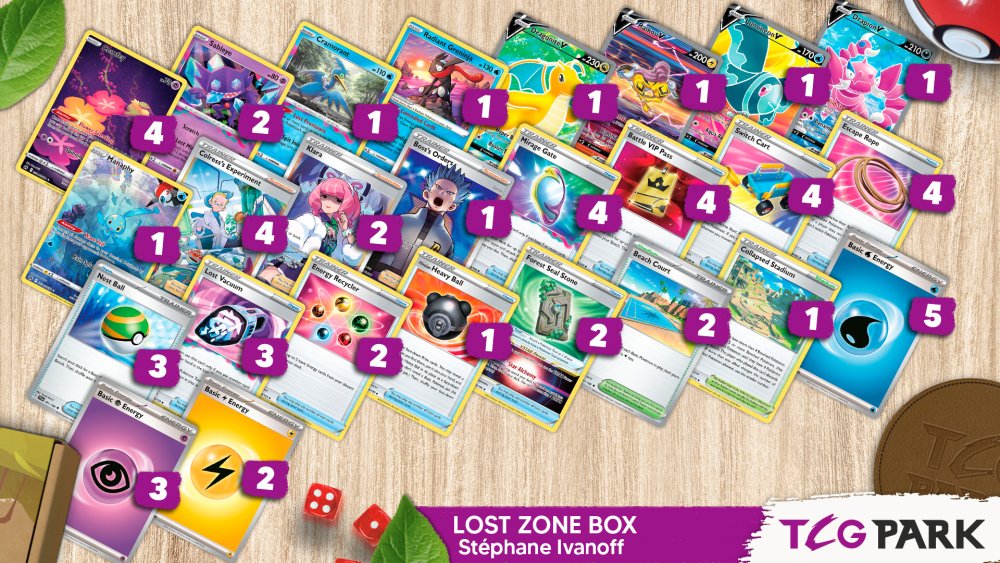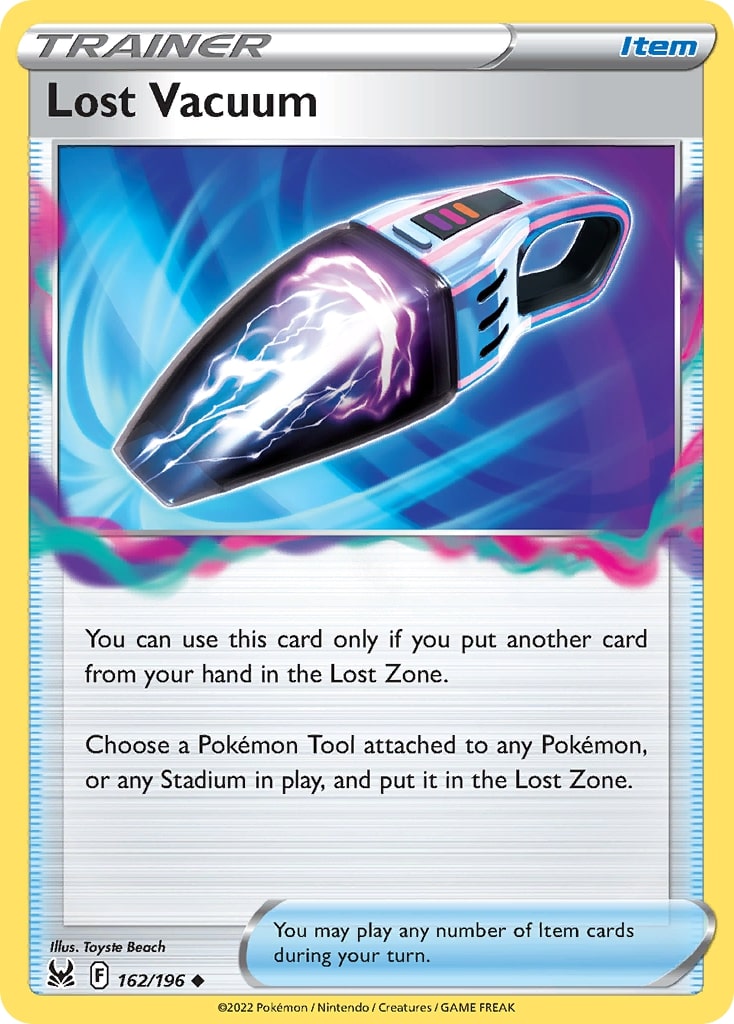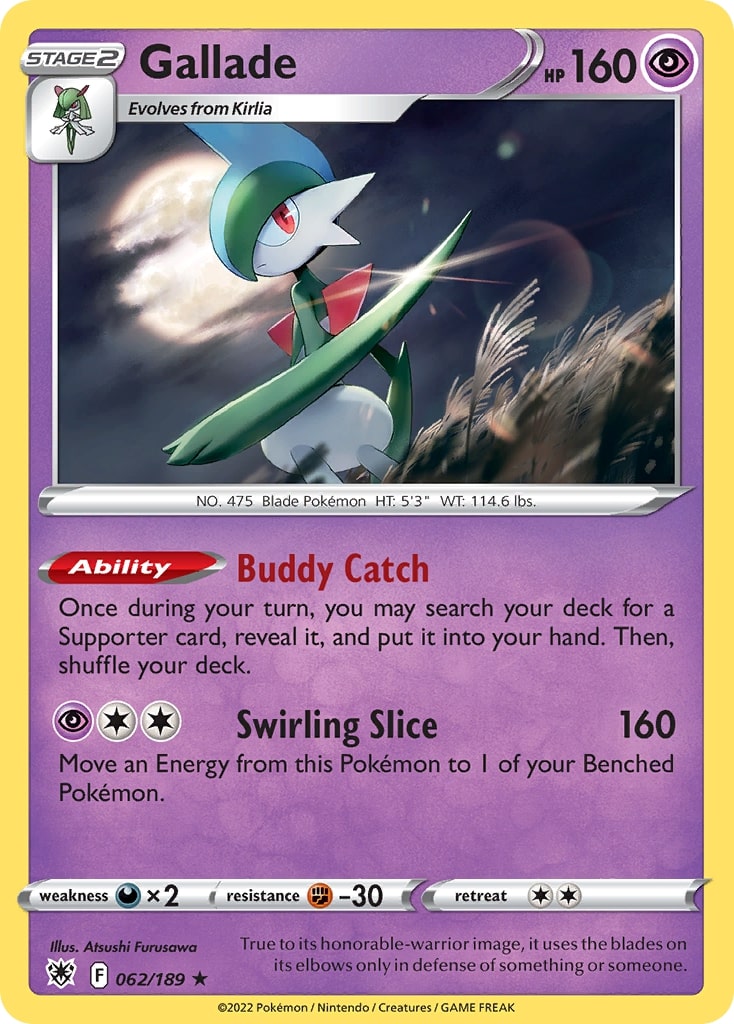Now that competitions in the Silver Tempest format are over, everyone is definitely turning their eyes towards the post-rotation format, especially those of us who will be attending the European International Championships, the first tournament in the new format.
Obviously, plenty of people have been playing games in this format for a while, not to mention that rotation has occurred in January in Japan, so it’s not like everyone’s lost. I wrote a guide to the rotation a few weeks back that you can check if you’re looking for the basics of what to expect.
However, there’s still plenty to be discovered. Even when a format is played for months in Japan, players in the rest of the world still manage to innovate, whether it’s because they perfect top tier decks, develop archetypes that wouldn’t work as well in Japan’s best of one environment, or even invent new decks altogether (this happens rarely, but we’ve seen it happen, mostly with Control variants). Because of that, I thought it would be interesting to talk through what I’m testing and what I think about the format so far. As a disclaimer, this article was written on the day that Scarlet & Violet came out on Pokémon TCG Live; by the time you’re reading it, I’m assuming many online tournaments will have taken place and the general knowledge of the format will accelerate greatly.
The Lost Zone engine
Comfey and Colress’s Experiment are better than ever. Without Scoop Up Net to remove damaged Pokémon from the field, Stoutland V to take multiple Prizes off Basic Pokémon, or even the regular disruption from Marnie (Judge is still around, but it’s not as good, so it will be played a bit less), the Lost Zone engine can thrive more than ever. The combination of Sableye and Radiant Greninja is particularly powerful when Pokémon can’t be removed from the field. If the opponent doesn’t play Manaphy, Radiant Greninja deals a huge amount of damage for a one-Prizer; if they do, they give Sableye an easy target.
The two main decks that can abuse the Lost Zone engine are Lost Toolbox and Giratina VSTAR. Even among Lost Toolbox decklists, there are many variations beyond the obvious core of Greninja, Cramorant and Sableye: do you play Sky Seal Stone? Do you play Dragonite V? Galarian Zapdos V? Zamazenta? Galarian Moltres? Snorlax?
No matter what variant you run, though, Lost Box mirror matches often come down to a race where the first attacker wins. Pokémon like Zamazenta and Dragonite V are mostly useful against other decks, but when you’re facing another Lost Box deck, you’ll be using Sableye most of the time. You can use some other Pokémon, like Raikou V, but it doesn’t really change the tempo of the race, as it can take two KOs but will also give up two Prizes. Therefore, the person attacking first (which is the person going second; don’t go first in the Lost Box mirror match!) has an advantage. The same goes for Lost Box vs Giratina.
My recommandation is therefore to play what is sometimes called the Turbo variant of Lost Box, using Forest Seal Stone and a heavy count of Lost Vacuum. You can use Lost Vacuum to Lost Zone your own Beach Court or Forest Seal Stone, adding two cards to your Lost Zone. With this, it becomes possible to use Sableye as soon as turn 2 (going second), which puts huge pressure on the opponent. It is even technically possible to get a turn 1 Mirage Gate by using three Flower Selecting, a Colress’s Experiment, and a Lost Vacuum on one of your own cards. However, don’t expect that to happen without incredible luck.
The following decklist won Taiwan’s recent Regional League, a tournament that had more than 1700 players, and it’s currently what I would run at EUIC if I can’t find something that I like more.
Pokémon – 13
| 4 Comfey LOR 79 |
| 2 Sableye LOR 70 |
| 1 Cramorant LOR 50 |
| 1 Radiant Greninja ASR 46 |
| 1 Dragonite V PR-SW 154 |
| 1 Raikou V BRS 48 |
| 1 Lumineon V BRS 40 |
| 1 Drapion V LOR 118 |
| 1 Manaphy BRS 41 |
Trainer Cards – 37
| 4 Colress’s Experiment CRZ GG59 |
| 2 Klara SWSH 302 |
| 1 Boss’s Orders SWSH 251 |
| 4 Mirage Gate LOR 163 |
| 4 Battle VIP Pass FST 225 |
| 4 Switch Cart ASR 154 |
| 4 Escape Rope BST 125 |
| 3 Nest Ball SVI 181 |
| 3 Lost Vacuum CRZ 135 |
| 2 Energy Recycler BST 124 |
| 1 Hisuian Heavy Ball ASR 146 |
| 2 Forest Seal Stone SIT 156 |
| 2 Beach Court SVI 167 |
| 1 Collapsed Stadium BRS 137 |
Energy – 10
| 5 Water Energy 003 |
| 3 Psychic Energy 005 |
| 2 Lightning Energy 004 |

Note that it’s also possible to run Kyogre CEL in this kind of list, for a strong finish against some decks like Mew. In fact, a similar list (with Kyogre over Drapion V) made top 16 at the recent Aichi Champions League in Japan.
Here are my thoughts about other Lost Zone variants. First, I want to discuss Sableye / Radiant Charizard, a variant that is perhaps even more consistent due to not having to find Mirage Gate in order to launch big attacks. It’s a very strong deck too; however, by using Charizard rather than Greninja, it exerts a lot less pressure on the opponent. Decks that run Radiant Greninja force the opponent to find their Manaphy. If they don’t run it, or Prize it, they can lose the game very quickly. Even if they do get Manaphy, they’ll have to find it again if it gets Knocked Out, and even if it doesn’t, it still takes a Bench slot, which can matter a lot in a format without Scoop Up Net.
Giratina VSTAR is a bit disappointing compared to what I expected. In the Lost Origin format, I liked the deck a lot because it could run Roxanne and come back against Lost Zone decks this way. However, without Scoop Up Net to heal a damaged Pokémon, and with Beach Court usually staying in play all game, it’s now much harder to do that. Even if you Roxanne, the opponent might have the win on board already, not to mention they might be able to spread damage without activating Roxanne and take four Prizes in one turn instead of taking one every turn.
Giratina’s selling point is that it beats some of the stuff that people might play to try to counter Lost Box. For example, Klefki (especially if there are two of them, for Escape Rope purposes) can be a headache for Lost Box to deal with. A Giratina deck can simply use Abyss Seeking in the early game in order to still draw cards and fill up their Lost Zone, even without access to Flower Selecting.
Finally, there’s Goodra VSTAR, which is looking to once again be the Lost Box deck that beats other Lost Box decks. The deck has been getting some results here and there, including a top 4 finish at the Korean Regional League. Now that Lugia decks don’t have a way to OHKO Goodra VSTAR and that most Mew decks will be using Fusion Strike Energy again, Goodra is looking like a strong contender if it can beat the dreaded Lost Box. However, the deck still has to deal with the threat of Giratina VSTAR, and I’m not sure if there’s a way to improve this matchup. Perhaps Goodra could be a good play later in the format if Giratina decreases in popularity like it seems to be doing in Asia, but for the first event in the format, it’s not a risk that I would be comfortable taking.
It should be mentioned, though, that many decks, from Gardevoir to Miraidon to Lugia, are playing Collapsed Stadium, mostly in order to remove their damaged Pokémon from play and deny Sableye KOs. As the only Lost Zone deck to not play Sableye, Goodra doesn’t care that much about it!
The Gardevoir situation
I love stage 2 decks, and Gardevoir ex is no exception. There are so many Abilities to use every turn and choices to make (notably, which card to discard with every Refinement) that the deck is an enjoyable puzzle to play. It feels like it has the potential to beat everything, but you need to play perfectly.
However, as much as I want to play Gardevoir, I must admit that I have doubts. The deck is very strong in general, but there are many small cracks in its facade of greatness that, together, become worrying. Let me explain.
First, Gardevoir doesn’t set up well every game. Sometimes, you get Battle VIP Pass and a Fog Crystal and you can basically get everything you need soon enough, but there are also games where you struggle to set up. Thankfully, Mirage Step Kirlia can save the games where you can’t set up more than one or two Ralts on turn 1, by letting you get your Kirlia in play anyway. However, we then run into the second issue, well known to Greninja players: sometimes, a Kirlia (or more) will be Prized, and then your setup is much worse.
Then, Gardevoir also needs to get Energy in the discard. I feel like four copies of Fog Crystal are important in order to get your Psychic Energy out of your deck as soon as possible. When they’re in hand, you can discard them with Concealed Cards or Refinement, and once they’re in the discard, they can be attached anywhere through Psychic Embrace, but you need to get there first. You often can’t use Gardevoir CRE early in the game because you don’t have enough Energy in play. Gardevoir ex is pretty decent as a first attacker as it can take a KO and tank a hit, but be careful in matchups where the opponent can KO it (for example, Lugia can do so by attacking with Tyranitar V).
Then there’s the matchups. Overall, Gardevoir does pretty well against most decks. I’m pretty satisfied with the Giratina and Lugia matchups right now, but Lost Box is a headache. You usually start attacking once the opponent has taken two Prizes, so you need to have multiple turns where they don’t take any. Even with healing in the form of Emergency Jelly and Cresselia, and hand disruption through Judge and Roxanne, it’s not easy to deny these Prizes. Gardevoir CRE is only a good attacker in this matchup if you can avoid putting damage on it with Psychic Embrace, either by getting Energy to it manually (or through Shining Arcana) or by using Cresselia to remove the damage. At 140 HP, Gardevoir can take a hit from Cramorant or Sableye and be healed by Emergency Jelly. At 120 HP, it’s an easy target for Lost Mine.
None of these weaknesses are dramatic in themselves. Even not setting up some games is less of an issue in a best of three environment. However, taken together, they can lead to a non-negligible amount of lost games, and slowly erode players’ trust in the deck.
That said, I haven’t given hope, and will do my best to fix the deck’s issues! One notable card to consider, that isn’t seeing that much play currently, is Gallade ASR. Its 160 HP are very solid against Lost Box, and it can take KOs while moving Energy to another attacker, allowing you to power up a Gardevoir CRE for future turns. And, of course, Buddy Catch is fantastic in order to get whichever Supporter you need – usually Judge or Roxanne against Lost Box, but Klara and Boss’s Orders are also important to grab at some key times.
(I think that Klara is better than Miriam in Gardevoir. You often don’t have that many important Pokémon in the discard, and would rather get back a Gardevoir or Gardevoir ex right now than have to dig for it again. Also, being able to get back Energy from the discard is surprising useful, even if it’s only to use Concealed Cards once or twice more.)
Other decks
First, I hate Lugia. I don’t even think it’s a bad deck, per se, but it’s so frustrating to play due to its inconsistency. Having to rely on Capturing Aroma, Great Ball, and/or Mesagoza feels so bad. I can’t see myself playing this deck at EUIC when I can play decks that are less luck-based and probably stronger overall.
Miraidon is a bit disappointing in my experience so far.
One thing I do like about the deck is the amount of options it has. A 1-1 line of Flying Pikachu VMAX, for example, has become the standard in Japan, mostly for the Lugia matchup (Flying Pikachu VMAX doesn’t share the rest of the deck’s Fighting Weakness, and it forces the Lugia deck to attack with Lugia VSTAR or Archeops, both of which get KO’d back). As for the deck’s main issue, Lost Box, one interesting variant I’ve seen around uses Zapdos PGO and Cleansing Gloves. With these cards, the deck can get a KO on a Comfey (or Cramorant) as early as turn 1 with Regieleki V’s Switching Bolt, switching to Klefki to really disrupt the opponent’s setup. Arven helps to find the relevant cards on the first turn.
However, I’ve found that the deck can sometimes run out of steam, if its relevant attackers are Knocked Out. Raihan could be a solution to this issue, but I haven’t tried it out yet. The other option is Flaaffy, however it takes up a valuable Bench spot and can be an easy target for the opponent.
Finally, I want to mention Shadow Rider. This deck is most likely a fun deck more than anything, but a new variant did make some top cuts at Japanese City Leagues. Shadow Rider can be paired with Klefki and Hatterene V, which has an 80-damage hit-and-run attack, in order to KO Comfey and Sableye. The deck also has some interesting perks: for example, against Lugia decks that don’t run Pumpkaboo (or Lost Vacuum), a turn 1 Shadow Mist with Path to the Peak in play will simply win the game.
Overall, I don’t think that Shadow Rider is a good enough deck (where’s Gengar & Mimikyu-GX when you need it?!), but it’s a fun concept to play around with.
The next step for me is to keep working on Gardevoir to see if I can make it work while keeping an eye on Lost Zone variants as a backup. I might even finally play Mew, although I wouldn’t bet on it right now. There’s still some time before EUIC, and I really hope I can find something strong for this event!
Thank you for reading and best of luck in breaking the metagame!
Stéphane




